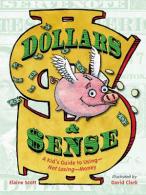
Architecture is the art and science of designing buildings, from skyscrapers to houses, cathedrals to factories, theme parks to museums. Architecture brings together art, math, physics, and engineering, plus an understanding of how people interact with designed spaces.

How Was That Built?: The Stories Behind Awesome Structures by Roma Agrawal
Author Roma Agrawal is a structural engineer. She has designed bridges and skyscrapers, and spent six years working on The Shard (the tallest building in Western Europe). In her book, she shows how engineers and architects approached a variety of challenges, from building a dome to building underground, on ice, even in space.

Buildings that Breathe, Greening the World’s Cities by Nancy Castaldo
Can a skyscraper be a forest? That’s the question architect Stefano Boeri asked when he integrated trees into his design for the Bosco Verticale in Milan, Italy. Readers will learn about the inspiration for his vertical tree towers, engineering the design, creating a team that includes arborists, and thinking about skyscrapers as forest habitat. It ends with how to make a difference in your city.

Discovering Architecture by Eduard Altarriba & Berta Bardí I Milà
An engaging examination of the architecture of buildings around the world, from the pyramids to architecture of the future (green growth, sustainable buildings, & perhaps even life on Mars), famous architects, and the role of architecture in our daily lives. Awesome cut-aways, illustrations, and floor plans combine with history, math, and practical examples to make architecture fun.

Wild Buildings and Bridges: Architecture Inspired by Nature by Etta Kaner, illustrated by Carl Wiens
Many architects look to nature to help solve building challenges and inspire design. Readers will see how cacti and desert canyons inspired cooling features, and water lilies inspired a floating house. Sidebars highlight architects and there are a few activities included.

The Story of Buildings: From the Pyramids to the Sydney Opera House and Beyond by Patrick Dillon, illustrated by Stephen Biesty
This book looks at the diversity of buildings as well as materials used. Visit the Parthenon, examples of Roman architecture, and Notre Dame. Tour the Forbidden City, and compare Renaissance buildings with modern styles. The tour ends with a close look at a straw bale house incorporating environmental design for heating and cooling.

Atlas of Amazing Architecture: The Most Incredible Buildings You’ve (Probably) Never Heard Of by Peter Allen
Buildings have amazing stories, and this book introduces 30 lesser known buildings around the world. They range from neolithic monuments to airports, temples to pyramids, palaces to hideaways. A great way to tour architectural diversity.

Ancient Wonders – Then & Now by Lonely Planet Kids, Stuart Hill, illustrated by Lindsey Spinks
Gatefolds and flaps offer a fun interactive look at architectural marvels throughout the world, including Easter Island, Angkor Wat, and Petra as well as sites in Rome, England, Greece, and Egypt. Explaining the construction, usage, and current condition.

Great Building Designs: 1900 to Today by Ian Graham
Stunning photos of 12 famous buildings around the world and the architects who built them. Side bars define design elements, statistics, history, and the buildings’ interactions with the environment. It includes a challenge to design a building, timeline, glossary, and further ideas for research.
ARCHITECT BIOS:

Maya Lin: Thinking with Her Hands by Susan Goldman Rubin
Maya Lin won the design competition for the Vietnam Veteran’s Memorial when she was a college student. She uses stone and water to design her monuments as well as other buildings: a museum, library, chapel, house. Lin’s designs take into account how people interact with the space.

Immigrant Architect: Rafael Guastavino and the American Dream by Berta de Miguel, Kent Diebolt, and Virginia Lorente, illustrated by Virginia Lorente. (Picture Book)
Historical fiction told in a wonderful conversational voice from the perspective of architect Rafael Gustavino Moreno’s son, Rafael Gustavino Expósito, about their experiences immigrating from Spain, patenting of the “Gustavino tile vaulting system,” hard work, and ultimate creation of over a thousand buildings in the U.S., including Grand Central Station in N.Y, the Boston Public Library, the ceiling at Ellis Island, and a “ghost” subway station (that can still be seen).
ACTIVITY BOOKS:

Architecture for Kids: Skill-Building Activities for Future Architects by Mark Moreno and Siena Moreno
The first part of the book is an introduction to architecture, presenting information about foundations, structure, site plans, elevations – even climate and landscape considerations. There’s an activity on each page, and each chapter ends with a challenge. Part two is all about designing your dreams, with prompts for everything from a tiny house to clothing. Lots of fun and all you need is a pencil.

Adventures in Architecture for Kids: 30 Design Projects for STEAM Discovery and Learning by Vicky Chan
Awesome hands-on activities using cardboard, vegetables, and other common household items guide kids through general construction, historic architecture (using or combatting nature), landscape architecture (tree houses and zoos), sustainable architecture, and city planning. It provides materials lists and notes for adults (outlining physical and mental challenges) for each project, a glossary, and templates.
This month’s STEM Tuesday book list was prepared by:

Sue Heavenrich, who writes about science for children and their families on topics ranging from space to backyard ecology. Bees, flies, squirrel behavior—things she observes in her neighborhood and around her home—inspire her writing. Her most recent book is Funky Fungi (with Alisha Gabriel). Visit her at www.sueheavenrich.com.

Maria Marshall, a children’s author, blogger, and poet who is passionate about making nature and reading fun for children. When not writing, critiquing, or reading, she watches birds, travels the world, bakes, and hikes. Visit her at www.mariacmarshall.com.








 I am so excited to share the newest cover reveal for an awesome new space book by our own Mixed-Up Files Jennifer Swanson’s SPACE CARE: A Kid’s Guide to Surviving Space
I am so excited to share the newest cover reveal for an awesome new space book by our own Mixed-Up Files Jennifer Swanson’s SPACE CARE: A Kid’s Guide to Surviving Space